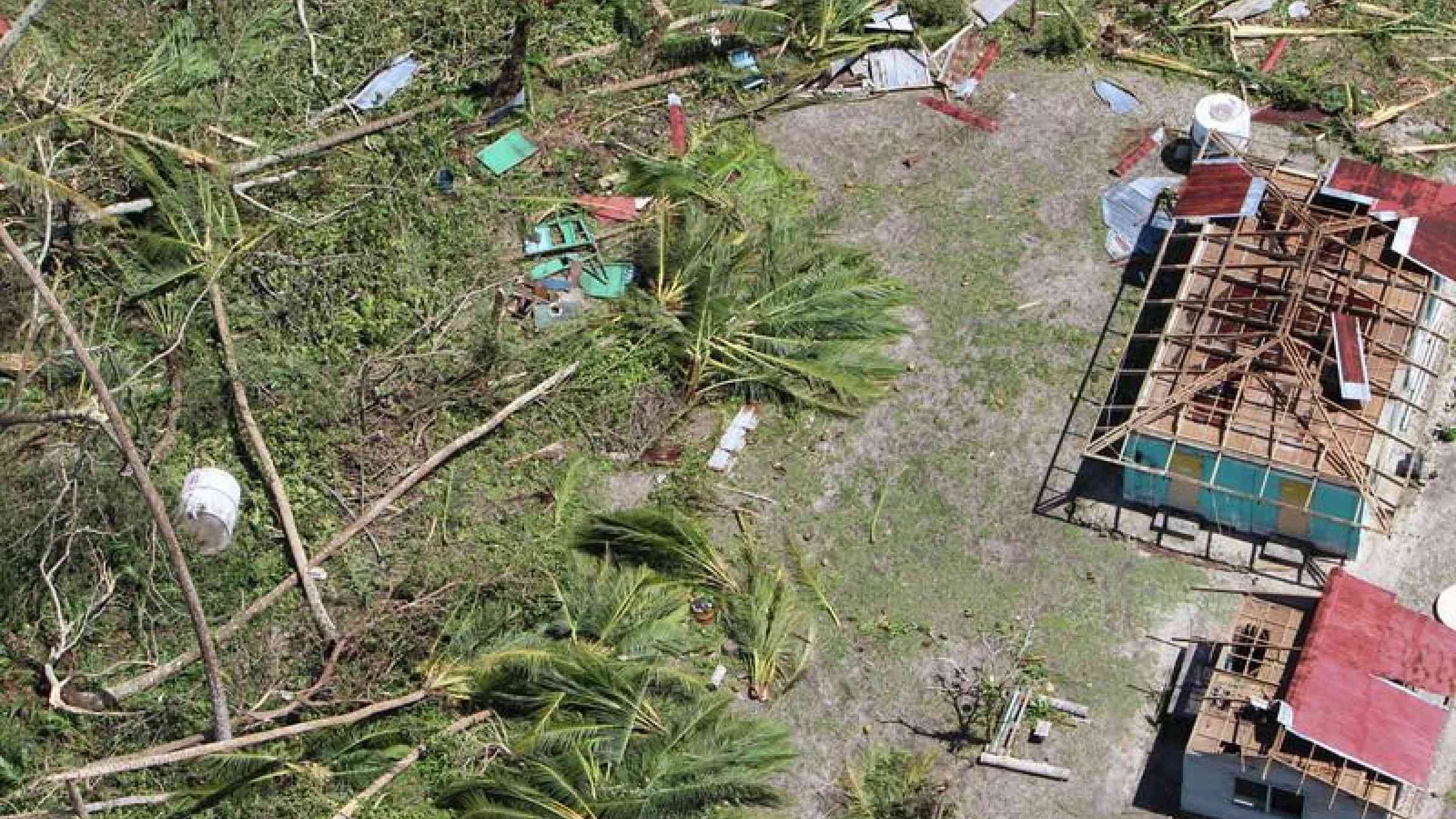Opinion: Reducing disaster risk is a question of survival

Extreme change is taking place in planetary systems, undermining development gains and pushing people into poverty
By Mami Mizutori, head of the UN Office for Disaster Risk Reduction
“Development efforts are increasingly at risk. A faltering global economy, food and energy insecurity, conflict, global climate change, declining ecosystems, extreme poverty, and the threat of epidemics seriously challenge progress towards improving social welfare and economic growth in many developing countries.”
That was the opening paragraph of the very first Global Assessment Report for Disaster Risk Reduction (GAR09) published ten years ago by the UN Office for Disaster Risk Reduction. Those words are as valid today as they were then.
As we prepare to launch a new edition at the Global Platform for Disaster Risk Reduction in Geneva next month, it is interesting to reflect on the legacy of this important repository of wisdom and knowledge which has benefited from the insight and experience of the world’s leading thinkers on disaster risk reduction over the last decade.
Six years before the adoption of the Paris Agreement, GAR09 published a 20-point plan to reduce risk, and the first recommendation was to “accelerate efforts to avoid dangerous climate change” by agreeing an effective multilateral framework to reduce greenhouse gas emissions and policies for sustainable carbon budgeting”.
Unfortunately, as the World Meteorological Organization’s Secretary-General, Petteri Taalas, recently highlighted, greenhouse gas emissions have only continued to rise year on year, despite the Paris Agreement and the rhetoric surrounding its implementation.
GAR09 appeared against the backdrop of the deaths of almost 140,000 people in Cyclone Nargis which hit a poorly prepared Myanmar in 2008. In China, 87,000 people died that same year - including thousands of schoolchildren - in the Sichuan earthquake which damaged or destroyed 21 million buildings.
This year’s GAR will appear against the backdrop of the humanitarian emergency triggered by Cyclone Idai and Cyclone Kenneth, two unprecedented storms that have affected millions of people, particularly in Mozambique where hundreds of lives were lost. These two events were made more likely by rising seas and the gradual warming of the southern Indian Ocean.
The biennial GARs have always emphasised that reducing disaster risk also helps to reduce poverty and to safeguard development gains in a world where it is estimated that 26 million people are pushed into poverty every year by disasters.
GAR09 also included a recommendation to increase the economic resilience of small and vulnerable countries with improved coordination of policies on trade and disaster risk reduction, particularly in the case of Small Island Developing States (SIDS) and Landlocked Developing Countries.
The World Trade Organization seems inclined to move in that direction as it considers Trade Policy Reviews carried out for two such countries where development gains have been wiped out by recent disaster events, Nepal and Vanuatu.
Counting losses
The GAR has also focused with laser-like tenacity on the issue of governance. A key early finding was that “global disaster risk is highly concentrated in poorer countries with weaker governance. Particularly in low and low-middle income countries with rapid economic growth, the exposure of people and assets to natural hazards is growing at a faster rate than risk-reducing capacities are being strengthened, leading to increasing disaster risk”.
This is why the global plan for reducing disaster losses, the Sendai Framework for Disaster Risk Reduction, includes among its seven targets a specific goal to “substantially increase the number of countries with national and local disaster risk reduction strategies by 2020”.
GAR09 also recognised the everyday reality at the heart of disaster risk management.
While most disaster mortality and damage to critical infrastructure is largely concentrated in very small areas exposed to infrequent but extreme hazards (cyclones, tsunamis, earthquakes), low-intensity damage to housing, local infrastructure, crops and livestock is extensively spread within many countries and occurs very frequently (caused by floods, drought and heat stress).
Such damage represents a significant and largely unaccounted for facet of disaster impacts and is a key reason why the UN Office for Disaster Risk Reduction supports the creation of national disaster loss databases to encourage more targeted and accurate investment in resilient infrastructure and a deeper understanding of disaster risk.
GAR19 stakes a bold claim in a new space, moving beyond disaster risk in the singular to consider the systemic and pluralistic nature of risk: in multiple dimensions, at multiple scales and with multiple impacts.
GAR19 recognizes that extreme change is taking place in planetary systems, and we must act if we are to survive as a species.